Tokenomics Fundamentals: W5H Framework for Token Design
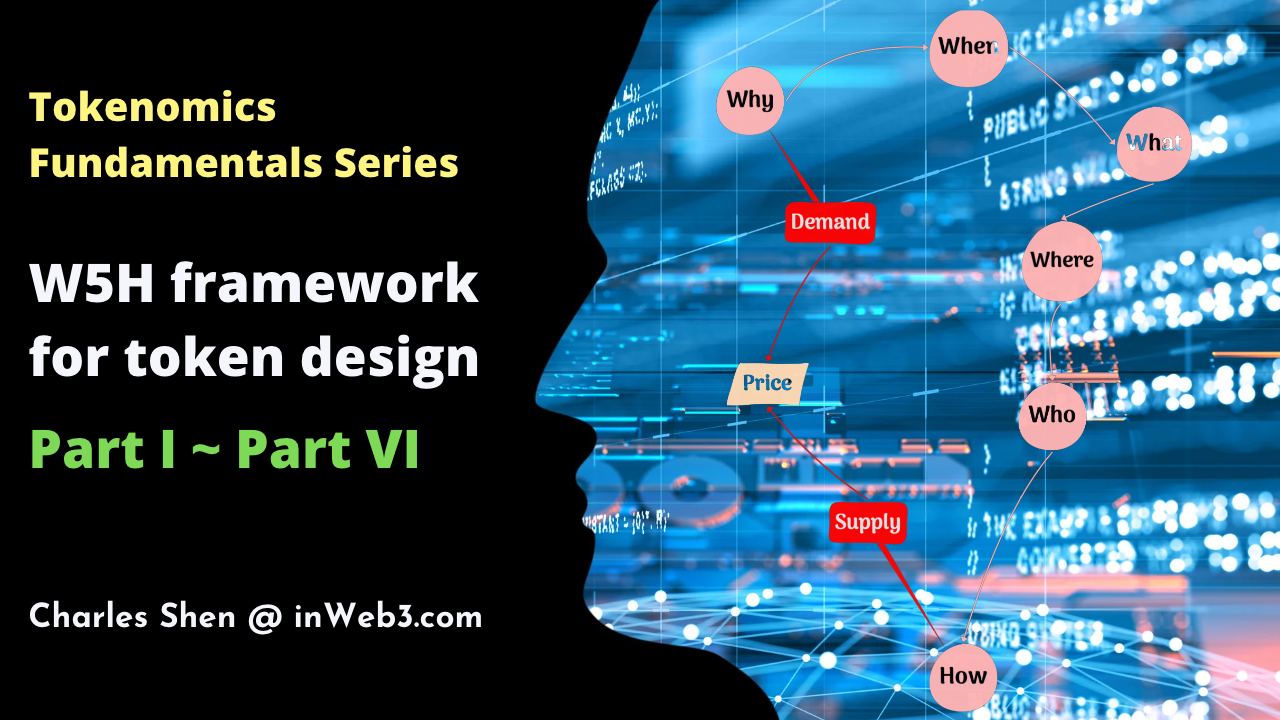
Tokenomics Fundamentals Part I: W5H framework & Why token?
We provide a beginner-friendly approach to understanding Tokenomics through a W5H framework - “Why, When, What, Where, Who and How” for token design. This first one of the six-piece series on W5H addresses “Why token”, especially from a crypto-product-market fit perspective.
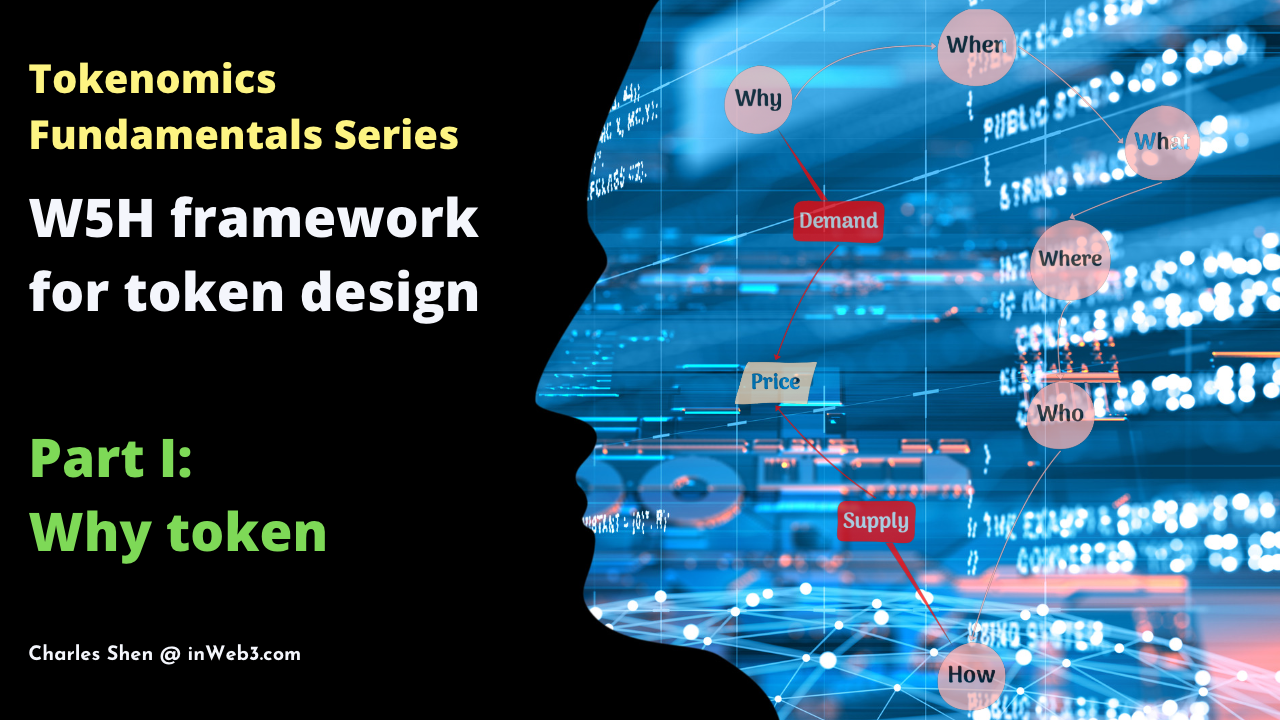
Tokenomics Fundamentals Part II: When, What, Where, Who token?
Following the prior “Why token” discussion, we continue on to the “When, What, Where, Who” questions under the W5H framework for token design, and provide various examples.
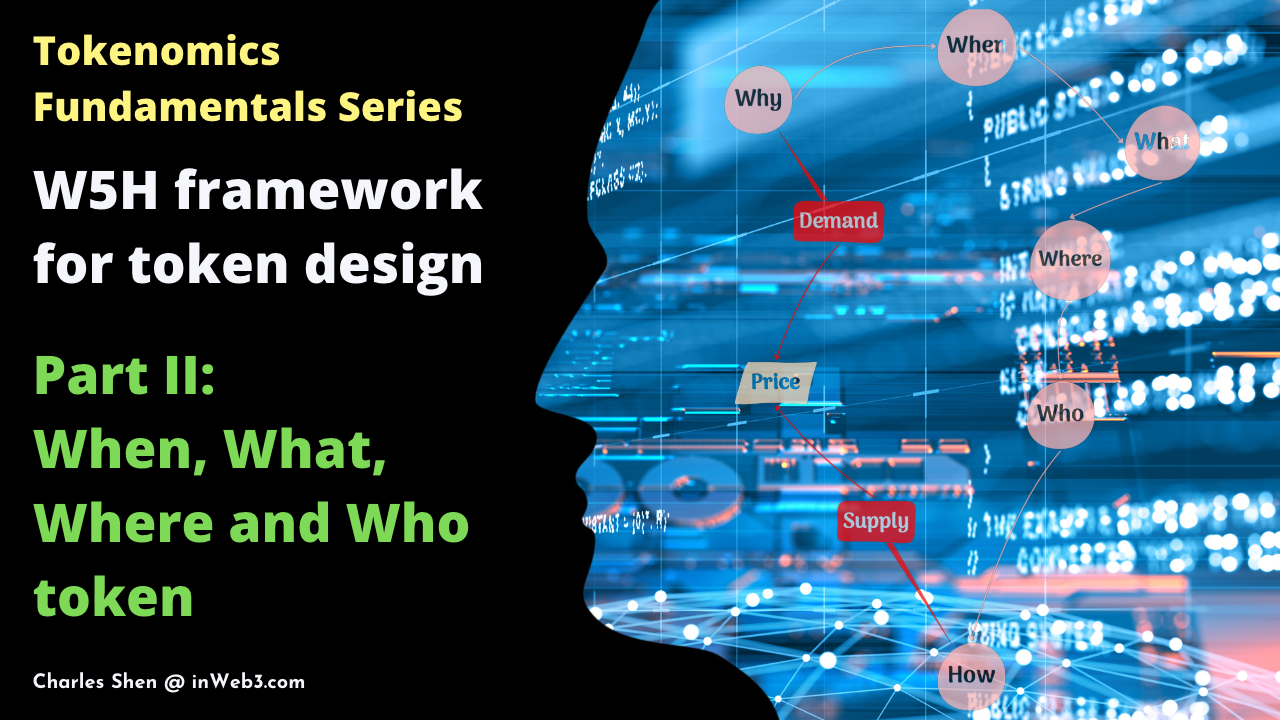
Tokenomics Fundamentals Part III: How token
Following the “Why, When, What, Where, Who” of token design, we discuss the “How token” of the W5H framework and cover the number of distinct tokens needed, token supply generation and allocation, token supply distribution, as well as building token liquidity.
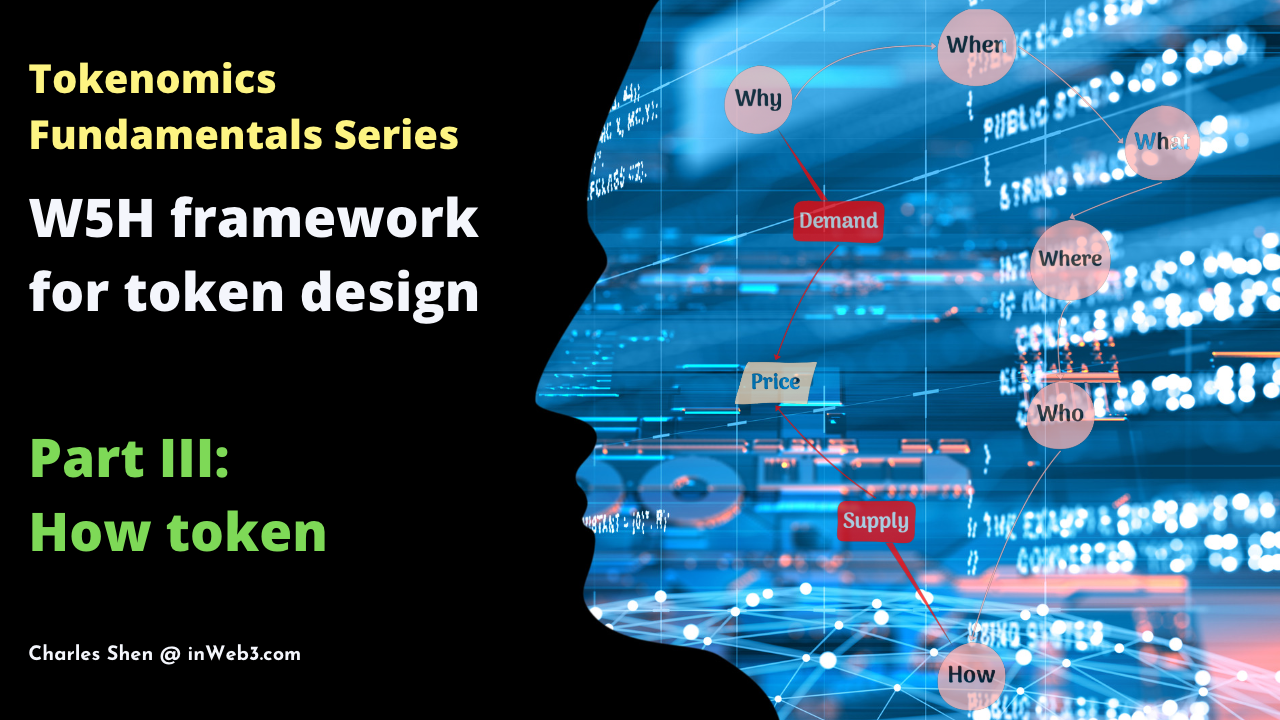
Tokenomics Fundamentals Part IV: Token supply & demand dynamics
After prior coverage of the “Why, When, What, Where, Who and How” of token design, we explore the supply-demand and their dynamic equilibrium that close the W5H loop. We introduce token supply-demand regulation mechanisms and illustrate how to analyze a given project using case studies.
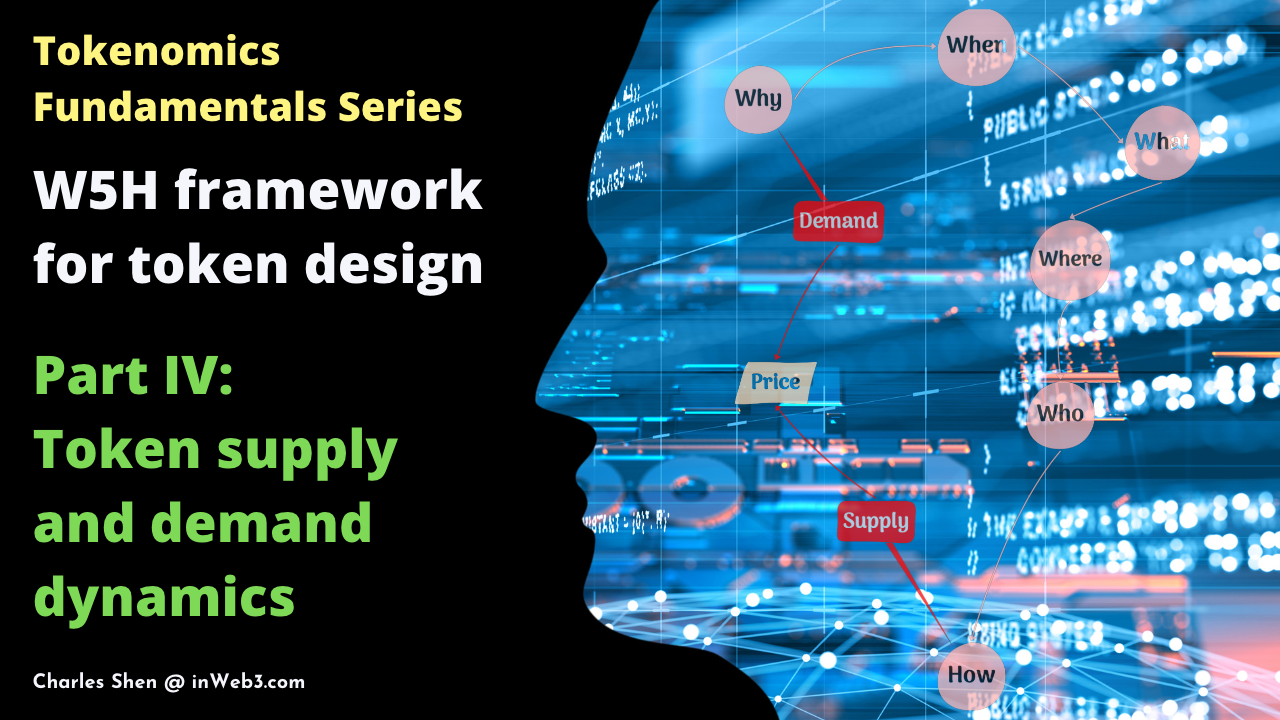
Tokenomics Fundamentals Part V: Token value accrual
Based upon prior discussions of sustainable value creation in crypto economies, this article discusses the allocation and distribution of those values. We focus on how the process enables value accrual to token holders, through both universal and selective distribution mechanisms.
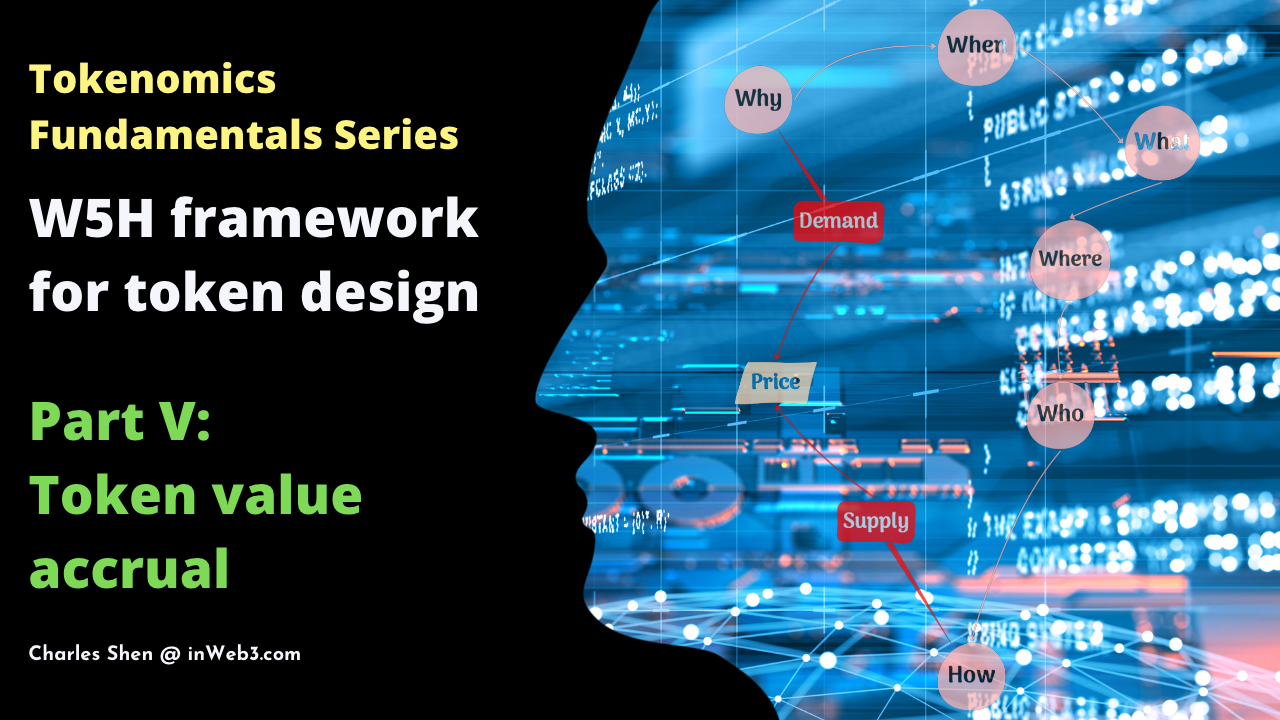
Tokenomics Fundamentals Part VI: Token value assessment
We discuss various TradFi modeling methods for token valuation and their limitations, look at speculative token values and their impact on price, and briefly introduce token engineering as a rigorous modeling methodology for token-based crypto-economic system analysis.
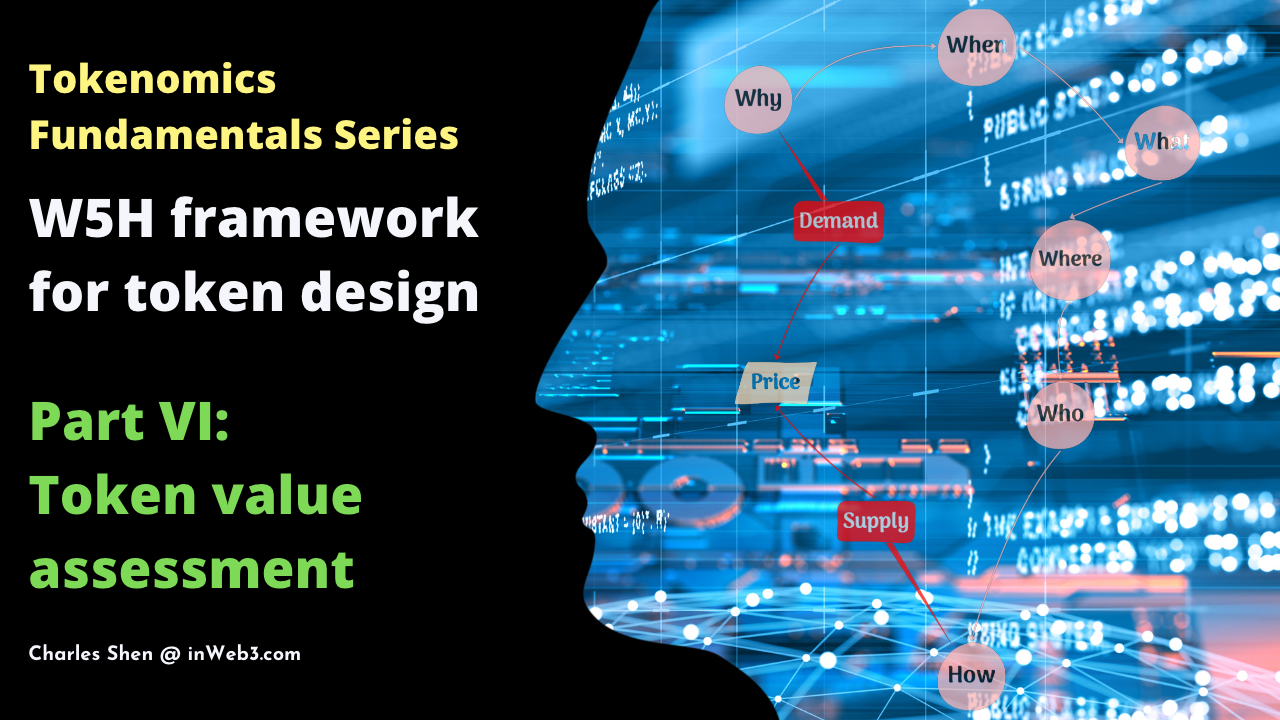
The overall W5H framework from Part I ~ Part VI is shown below
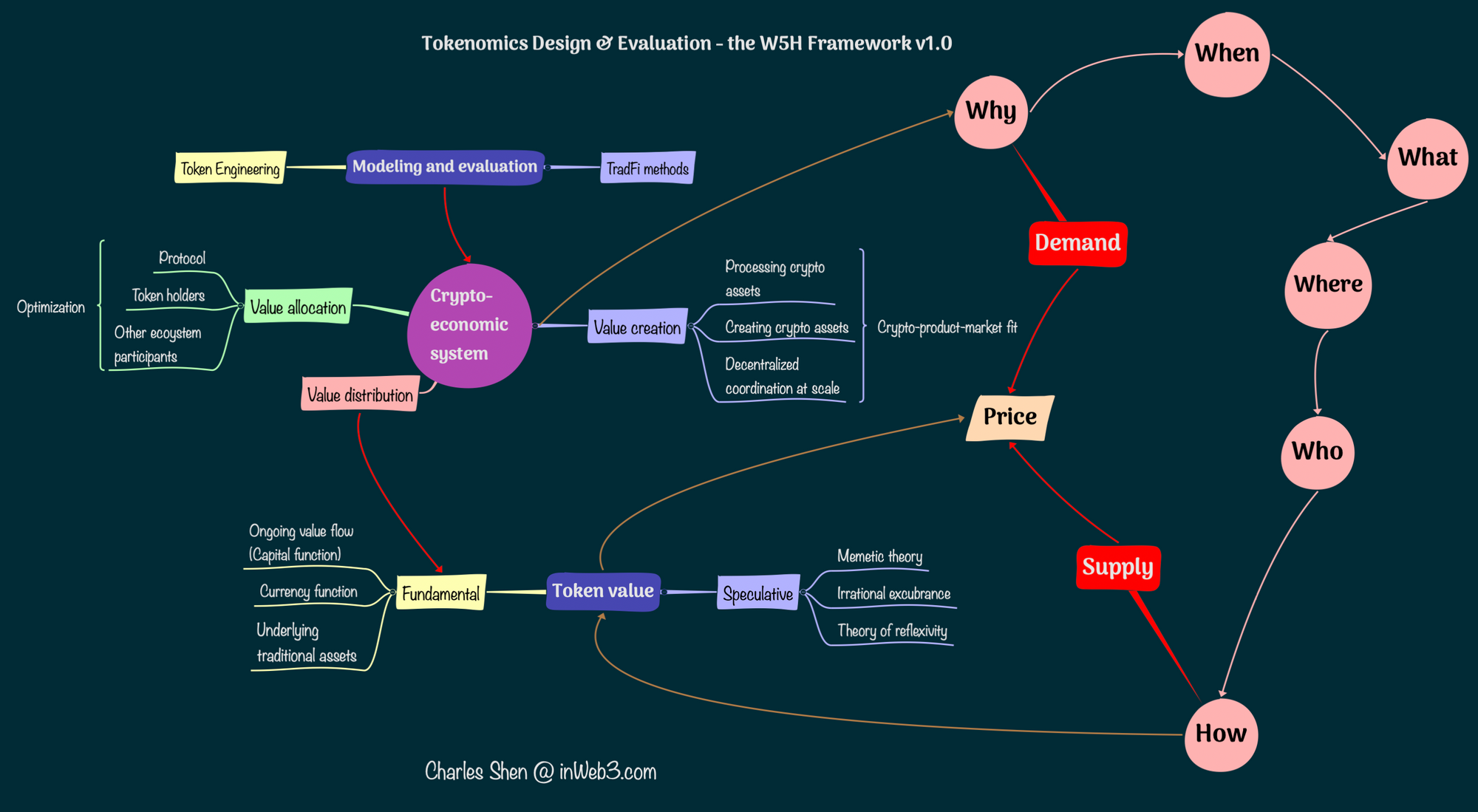
Acknowledgment: the author would like to thank colleagues at ConsenSys for inspirational discussions while developing this framework.

